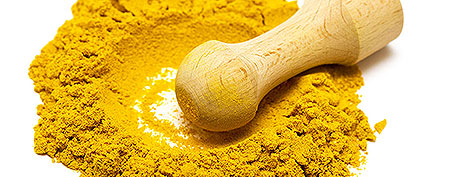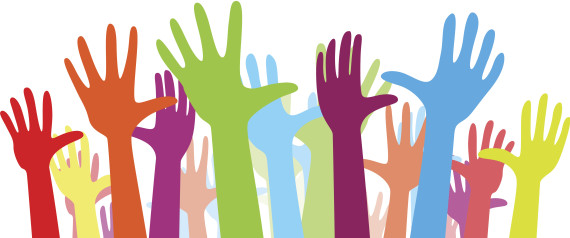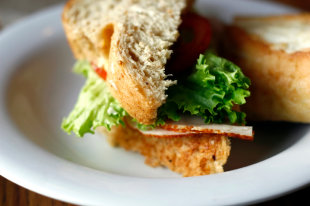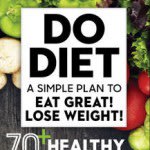This article originally published in SparkPeople:
The Best Fat-Burning AdviceThe Best Fat-Burning Advice
Get the Facts to Burn the Fat
-- By Dean Anderson, Fitness & Behavior Expert
Wouldn’t it be great if all the fat-burning secrets you see in magazine ads and TV infomercials actually worked? If sauna suits, cellulite-shrinking creams, herbal wraps, and pills designed to “boost metabolism and melt fat away” did what they claim to, obesity would be a thing of the past.
But they don’t work. And neither do any of those exercise gadgets that promise to reduce the fat in your fill-in-the-blank problem area (i.e. belly, hips or thighs). That’s just not how your body operates. You probably know by now that the only healthy way to lose fat (and keep it from finding you again) is to spend more energy on physical activity than you take in from food. That takes a combination of moderate calorie restriction and increased physical activity–a healthy lifestyle, not a crash weight loss program or other magic gimmick.
But what about some of the less outrageous claims and advice about fat burning that are floating around? Can you burn more fat by exercising early in the morning, or on an empty stomach? Does building up a lot of muscle really make you burn a lot more calories even when you’re sitting still, making strength training more important than cardio? Will you lose more fat if you exercise at a lower intensity for a longer time?
We’ll take a look at each of these claims, and see how they stack up against the evidence that is currently available. Then we’ll put all this information together into an effective fat-burning strategy that will really work for you.
Exercising Early in the Morning
Fat-burning claim: Exercising first thing in the morning will force your body to use fat as fuel. Proponents of this claim say that while you’re sleeping overnight, your body is in a state of fasting that uses up most of the carbohydrates (stored as glycogen) that you ate during the day. Therefore, working out in the morning burns fat because fat is the only fuel available.
Fat-burning fact: Not true! Your body stores glycogen in two places: in your liver and muscle cells. When you sleep, your body turns to glycogen in the liver to keep your brain, nervous system, and other essential operations going while you’re not eating. Therefore, the stored carbohydrates in your liver will become depleted overnight. But remember how your muscles also store carbohydrates in the form of glycogen? This muscle glycogen can only be used by those muscle cells. So, unless you run a 10K race in your sleep, your overnight "fast" will not noticeably affect on your muscle glycogen. This is a good thing, because you’d never make it through the first few minutes of your morning exercise routine if you didn't have any muscle glycogen.
Fat-burning tip: Exercise will burn fat stores at any time of day or night. There are several good reasons to exercise early in the morning, if you can manage it. You’ll get it done before other things have a chance to get in the way of your workout. And for many people, an a.m. fitness routine offers a psychological boost that can make the rest of the day much easier.
Exercising on an Empty Stomach
Fat-burning claim: Exercising on an empty stomach will burn fat as fuel. Perpetrators of this theory refer to the body's insulin response, which goes like this:
- When you eat a meal or snack, your body releases insulin into your blood stream.
- Insulin's role is to help carbohydrates (glucose) move from your blood stream into your cells, where it is used to make energy.
- In the process, insulin partially inhibits the release of fat from fat cells, so that it can carry more glucose to your cells.
According to this theory, when you exercise before eating, the insulin response won’t happen; then the body's ability to burn fat as fuel won’t be inhibited; and you’ll end up burning more fat during your exercise.
Fat-burning fact: It's true that insulin inhibits release of fat from fat cells, but not true that exercising on an empty stomach makes you burn more fat overall. Anytime you are burning more fat during a workout, you are almost always burning fewer total calories, which basically defeats the purpose if your goals are weight loss and improved fitness. What really determines whether your body will turn to stored fat or carbohydrates (glucose) for fuel? The intensity and duration of your exercise. In a nutshell, you’ll burn more fat and more total calories when you exercise at high intensity levels. When you exercise at 70% to 90% of your max heart rate, your body can’t turn stored fat into fuel fast enough to meet the demands of your active muscles. But the more intense your exercise, the more total calories you'll burn during your workout and during the recovery phase afterward. When it comes to weight loss, total calorie expenditure is more important than where the calories are coming from (glucose or stored fat).
Fat-burning tip: Real fat-burning takes place during low-intensity, daily activities—not during exercise itself. The more calories (glycogen) you burn during exercise and recovery, the more your body will rely on fat stores to fuel the rest of your day. So instead of trying to figure out whether (or what) to eat before you exercise, choose whatever will help you put the most effort and time into your workout session. Everyone is different. Don't eat if it upsets your stomach to exercise soon afterward, but if you feel lightheaded or fatigued when exercising on an empty stomach, then you should eat a pre-workout snack or meal.
Exercising at Lower Intensity Levels for Longer Durations
Fat-burning claim: Exercising at lower intensity levels and for a longer duration burns more fat than moderate- to high-intensity exercise. People who subscribe to this theory use some of the same facts above regarding the source of fuel for various levels of exercise intensity. Further adding "credibility" to these claims, many cardio machines have "fat burning" workouts or programs, which have you exercising at lower heart rates.
Fat-burning fact: While it is a fact that low-intensity activities use more fat as fuel, this theory doesn’t hold up unless you can devote several hours every day to exercise. It’s important not to confuse percentage of fat burned with total amount of fat burned. Let's look at three examples of fuel usage, at three different intensity levels, and see which actually burns the most fat:
- High-intensity exercise (about 70% max heart rate): 33% of the energy you use comes from fat and 66% comes from glucose. You're burning about 600 calories per hour (200 calories from fat).
- Low-intensity exercise (about 50-60% max heart rate): Your ratio of fat to glucose usage is about 50-50. You're burning about 350 calories per hour (175 calories from fat).
- Sitting still (resting heart rate): 66% of the energy you use comes from fat and 33% comes from glucose. You're burning about 90 calories per hour (60 calories from fat).
Making Strength Training More Important than Cardio
Fat-burning claim: You’ve heard it a million times—muscle burns more calories than fat, even while you’re sitting still. So when it comes to losing weight, strength training is more important than cardio.
Fat-burning fact: Part of this is true. A pound of muscle, at rest, burns about three times as many calories as a pound of fat, which by nature is pretty much always “at rest.” But whether or not strength training should be the only (or main) focus of your fitness program depends on what the numbers really say.
At rest, one pound of fat burns about two calories per day, while one pound of muscle burns about six calories. Simply having more muscle is not going to make that much of a difference all by itself. Building five pounds of extra muscle is only going to add about 30 calories per day to your resting metabolic rate, but while you are cutting calories to lose weight, it's very difficult (if not impossible) to add five pounds of muscle to your body.
Muscle does burn more calories at rest and at work. But losing weight always involves losing some muscle along the way. If you don't strength train, as much as 30% of the weight you lose could be muscle weight, which works out to about 15 pounds of muscle loss for your 50-pound weight loss. Losing 15 pounds muscle could cost an active person several hundred calories per day in lost calorie burning capacity since active muscles (as opposed to resting) burn 30 times more calories than fat. This is one of the big reasons why people who lose weight rapidly on crash diets (without exercise) almost always put that weight back on later. However, an effective strength training program can reduce that 30% muscle loss figure to 3-5%. That's much better for your fat burning goals and your metabolism.
Fat-burning tip: Even if you're short on time, you shouldn't give up the cardio and concentrate on strength training if you want to burn fat. You'll burn more fat by doing 30 minutes of cardio than you will in a whole day sitting around with five extra pounds of muscle. But don’t make the opposite mistake of thinking you don’t need strength training, either. Both are very important for fat burning and overall health.
Putting It All Together Into A Working Formula…Success Still Depends On You.
When you put all this information together, the picture you see is very familiar. There aren’t any gimmicks or shortcuts. To burn fat, the variables are simple. You need to:
- Be as active as possible
- Exercise at a moderate (60% MHR) to high (>70% MHR) intensity level when doing cardio
- Include strength training two to three times per week
- Keep your total calorie intake below your total energy expenditure (without exceeding a 1,000 calorie deficit per day)
- Provide your body with plenty of quality fuel from healthy foods
When planning and timing your meals along with your fitness program, find what works best for you in terms of providing the right fuel at the right times, using your Nutrition Tracker and Meal Plans as a guide. Your energy and performance levels will tell you whether you need to eat before exercise, whether you need more or fewer calories, and what ratio of fat, carbs, and protein is best for the demands of your lifestyle. Now that you have the facts, don't let another fat-burning theorist steer you wrong ever again!
About The Author
 Dean Anderson
Dean Anderson
Dean Anderson has master's degrees in human services (behavioral psychology/stress management) and liberal studies. His interest in healthy living began at the age of 50 when he confronted his own morbid obesity and health issues. He joined SparkPeople and lost 150 pounds and regained his health. Dean has earned a personal training certification from ACE and received training as a lifestyle and weight management consultant. See all of Dean's articles.

![woman_sweat_water1(1)[1] woman_sweat_water1(1)[1]](https://blogger.googleusercontent.com/img/b/R29vZ2xl/AVvXsEg8YmhbA0e9iqVKcNvPWjnx1y0zAbKqAmO-C6NDtY08ng0BS4gG7bWGNI_jL6acHweKuPUAhyhaG1pafjYPkq8AwL84RbHBX2JwXcXB4HXx7aLVaPxrnGTMgVVuwOaZd6T8sHJ2UzZKMImj/?imgmax=800)














![graphic_100reasonstoworkout[1] graphic_100reasonstoworkout[1]](https://blogger.googleusercontent.com/img/b/R29vZ2xl/AVvXsEibzpTEWT1gbVhqSc-5pLc7wNMT-V38TbWrA_yrc7KGlR-wi-1bOclw-pafPumXSjsAhkYMGII6NlprfBkTqt3dbscuvQ7EgPP6MYJe0y7XjWz3KgElBKDoDG0MZoDnlKUZpKN2yMzoP_dN/?imgmax=800)